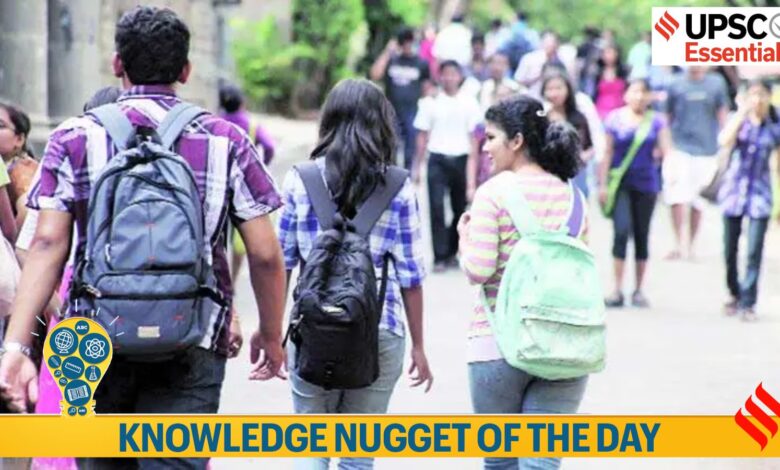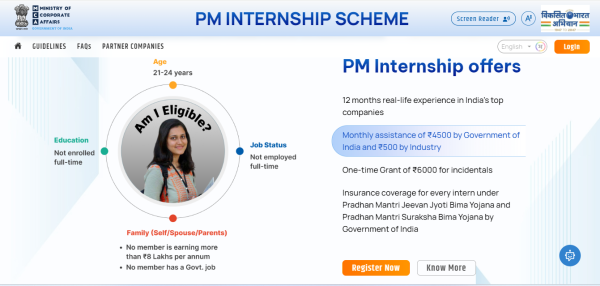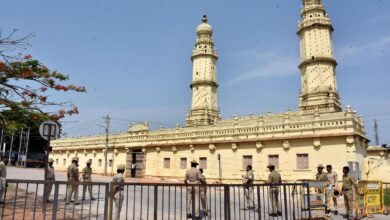Knowledge Nugget of the day: PM Vidyalaxmi Scheme

Take a look at the essential concepts, terms, quotes, or phenomena every day and brush up your knowledge. Here’s your knowledge nugget for today.
Knowledge Nugget: PM Vidyalaxmi Scheme
Subject: Schemes
(Relevance: Government schemes form an important component of the UPSC syllabus from both Prelims and Mains perspectives. In this regard, knowing about new government schemes and the purpose of introducing them is important for your preparation.)
Why in the news?
On November 6, the Union Cabinet approved the PM-Vidyalaxmi Scheme, making students admitted to quality higher education institutions (QHEIs) eligible for collateral-free and guarantor-free education loans.
Key Takeaways:
1. The new Central Sector scheme seeks to provide financial support to students so that financial constraints do not prevent anyone from pursuing higher studies.
| The difference between a central sector and a centrally sponsored scheme (CSS) is that for the former, the Union government bears all expenditures. For a CSS, the Union government bears part of the expenditure, and states bear the rest. |
2. An outlay of Rs 3,600 crore has been made for the scheme from 2024-25 to 2030-31, and around 7 lakh fresh students are expected to benefit from the interest subvention offered under the scheme.

3. Students will be provided a 75% credit guarantee by the central government for loans up to Rs 7.5 lakh. Students, with an annual family income of up to Rs 8 lakh, who are ineligible for benefits under any other government scholarship or interest subvention schemes, will be provided 3% interest subvention for loans up to Rs 10 lakh during the moratorium period.
4. The interest subvention support will be given to 1 lakh students every year. Preference will be given to students who are from government institutions and have opted for technical and professional courses,” the government statement said.
5. PM-Vidyalaxmi aims to expand and deepen the impact of the Government of India’s education and financial inclusion initiatives from the past decade, with a focus on broadening access to quality higher education for India’s youth. This initiative will complement the Central Sector Interest Subsidy (CSIS) and the Credit Guarantee Fund Scheme for Education Loans (CGFSEL), both part of the PM-USP, overseen by the Department of Higher Education.
| Central Sector Interest Subsidy (CSIS) |
| It provides full interest subvention on loans up to Rs 10 lakh to students with an annual family income of up to Rs 4.5 lakh, pursuing technical or professional courses. |
6. Quality higher education institutions (QHEIs) will be determined by NIRF rankings. The scheme will be applicable to all institutions, including government and private, in the top 100 overall and in other domain-specific rankings, state government institutions ranked 101 to 200, and all Centre-run institutions. Initially, 860 qualifying institutions, covering more than 2.2 million students, will be included in PM-Vidyalaxmi, providing potential access to benefits for interested students.
7. An official of the Ministry of Education said that with this, students enrolled in all courses, not just technical or professional ones, will be eligible under the scheme. Students can apply for a loan and interest subvention on a designated portal.
8. The Department of Higher Education will launch a unified portal – PM-Vidyalaxmi, where students can apply for education loans and interest subsidies through a streamlined application process accessible to all banks.
BEYOND THE NUGGET: PM Internship Scheme
1. The Prime Minister’s Internship Scheme which aims to provide internships to one crore youth in the top 500 companies over five years opened its portal for companies to register their internship opportunities for the pilot phase on October 3.
2. The scheme aims to provide students with internship opportunities to address youth unemployment. Through this scheme, PM envisions to provide internships to 1 crore young people over the next five years.

3. As an assistant, candidates will receive Rs 5,000 per month for the full 12-month internship. From the company’s CSR funding, each intern will get Rs 500 from the company, while the government will contribute Rs 4500.
4. Applicants will receive a one-time financial support of Rs 6,000 to cover incidental expenses in addition to the monthly stipend. Additionally, via initiatives like PM Jeevan Jyoti Bima Yojana and PM Suraksha Bima Yojana, the government will guarantee that interns are insured, with the government paying the premiums.
5. Those in the age group of 21-24 years are eligible to apply for the scheme, which is being implemented by the corporate affairs ministry through the portal pminternship.mca.gov.in’.
(Source: Cabinet clears PM-Vidyalaxmi, PM Vidyalaxmi Scheme, PM Internship Scheme)
Subscribe to our UPSC newsletter. Stay updated with the latest UPSC articles by joining our Telegram channel – IndianExpress UPSC Hub, and follow us on Instagram and X.
For your queries and suggestions write at khushboo.kumari@indianexpress.com







